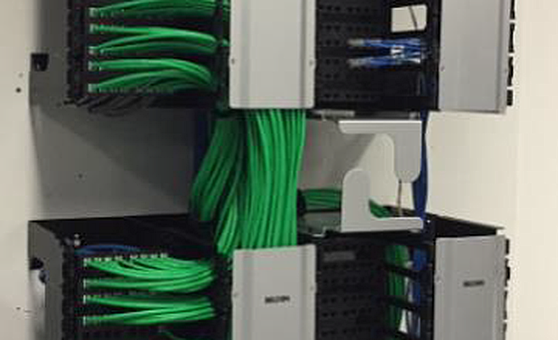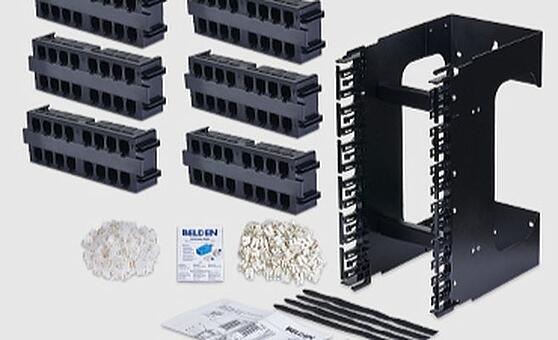4 Anforderungen an wandmontierte Schaltverteilersysteme
Whether you’re using a cross connect as a consolidation point, a small telecom room interconnect or a large data center cross connect, it’s important to find a system that can hold everything you need.
While cross connects can go into a rack, a wall-mount cross connect lets you take advantage of free real estate - your walls - inside your telecommunications room. This not only lets you install passive connectivity on the wall, but it may also reduce the number of racks you need.
When you’re searching for a wall-mount cross connect, there are certain features that will offer flexibility, versatility and time savings.
From our perspective, here’s what your wall-mount cross connect should include …
1. Flexibility in Design
Typical wall-mount cross connect systems use IDC blocks designed for a specific performance level (Category 5e, 6 or 6A).
Look for a system that offers the option to use different performance levels within the same cross connect, as well as a choice of different connection interfaces (couplers, jacks, multimedia, etc.). Single-port modularity is also a feature that allows for quick, cost-effective repair if a connection goes bad or suffers damage.
2. No Special Patch Cords
Typical 110-style wall-mount cross connects use blade patch cords that connect to IDC blocks. This usually results in the need to store different patch cord lengths and/or colors to connect equipment to distribution ports. Because most vendors have proprietary solutions for Category 6 and Category 6A, these cords are not readily available when the need arises.
Instead, search for a system with cut-to-length management that doesn't require a special patch cord. Das bedeutet:
- No slack management is required – the cords will be exactly as long as you need them to be
- No patch cord inventory is necessary, reducing the costs and time associated with maintaining patch cords in various lengths
- Short pieces of leftover cable can be recycled, leading to cost savings of up to 40% per port
If terminating cords in the field (cut-to-length) is not an option for you, go with standard RJ45 cords and use jacks (as opposed to couplers) in the wall-mount cross connect.

3. Preloaded Components
For even faster, more cost-effective installation, look for a wall-mount cross connect that comes preloaded with couplers or jacks that meet (or exceed) Category 6A performance. This not only futureproofs your installation, ensuring that you’re prepared to connect any type of equipment or technology, but it also:
- Simplifies your bill of materials (makes ordering faster and easier)
- Means that everything arrives ready to terminate
- Supports a faster termination process

4. High Density without Compromise
The whole point of using your wall to install passive connectivity is to save space in the telecommunications room or data center. Therefore, you should look for a system that offers termination density without compromising on the ease of termination or maintenance (like moves, adds and changes).
There needs to be enough space in the channels to dress the Category 6A cables (typically larger diameter) behind the connectors and sufficient space in the management channels to route patch cords or jumper cables.
Belden’s New Wall-Mount Cross Connect
Released earlier this year, Belden’s REVConnect® Category 6A Wall-Mount Cross Connect system offers all of these benefits – plus more. And it’s one of the only Category 6A wall-mount cross connects on the market.
Because it incorporates REVConnect couplers, jacks and plugs, there’s no need for special training to get the system up and running. The cables and jumpers are terminated following the simple REVConnect process.
Need help determining whether a wall-mount cross connect would work in your telecommunications room? Or what type of cross connect you may need? Leave us a note below or get in touch here.
